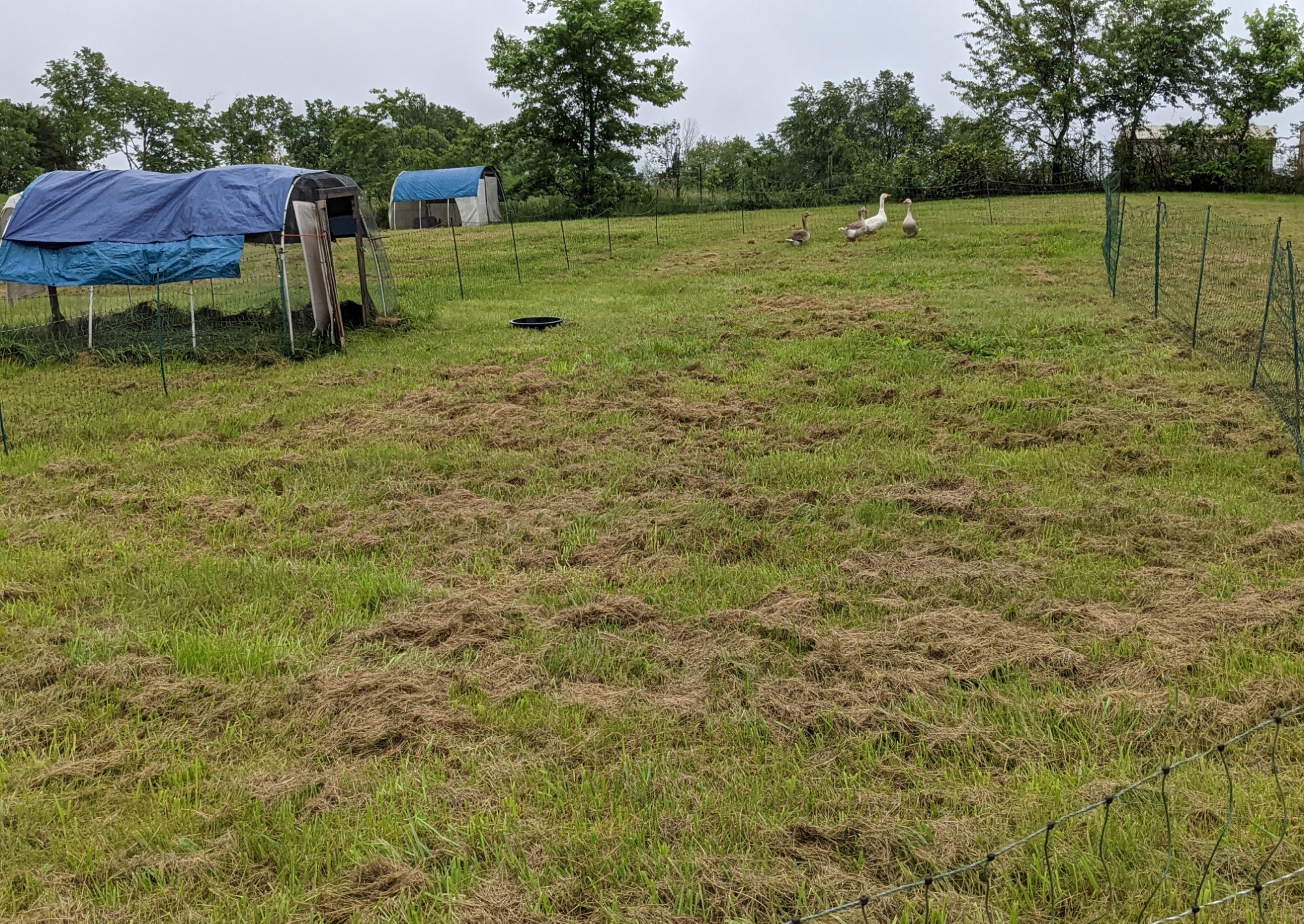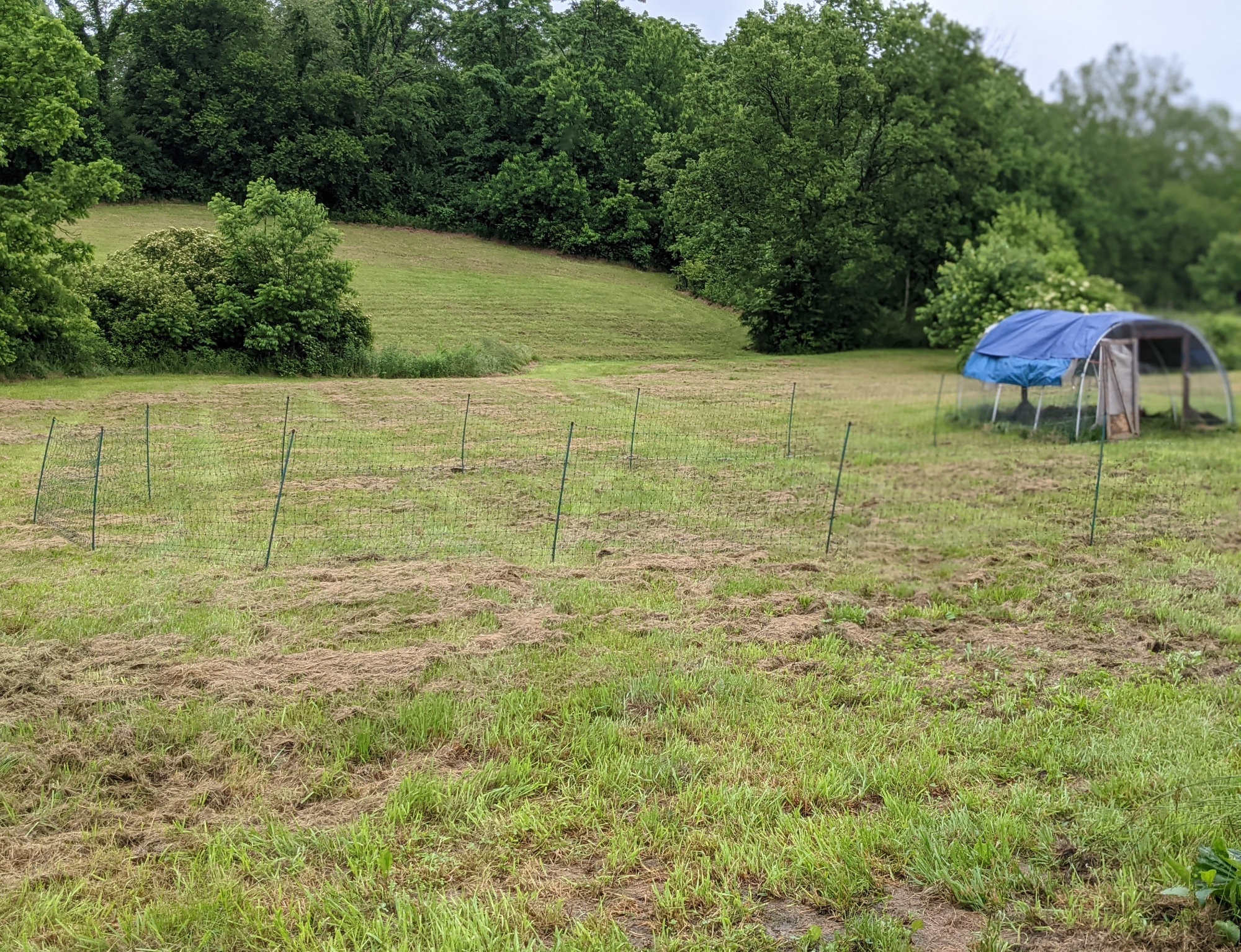
Integrations can be an exciting, but difficult, time: this is when young (or newly-added) animals join the resident group. For poultry, this can be a dangerous time, and it needs to be managed carefully. After weeks in tractors that were moved twice a day to fresh pasture, the goslings were finally ready to join the adult geese.
The goslings we hatched in the spring are about 6 weeks old now, and nearly completely feathered. They’ve been good sports about living in their low tractors, but needed more space to stretch those almost fully-feathered wings and exercise their legs.
We had already done a “test run” when the goslings were a few weeks younger to see if the adults would accept them into the gaggle, but, disappointingly, it seemed that neither the adults nor the goslings were ready at that point: the adults scared the living daylights out of the littles – imprinted on us, not the adult geese – by honking right in their faces, and they enjoyed chasing the frightened babies around.
It was a bit surprising that the adults, who had shown intense interest in the goslings and had constantly been getting as close to the tractors as they could (they could see each other through the movable poultry netting and the wire on the tractors) had reacted in such an unfriendly manner to the confused babies.
Of course, when you consider that it’s nearing the end of the breeding and laying season and hormones are running high, it makes more sense: the gander is overly protective of his ladies and the goslings seemed like interlopers. The adults’ reaction was actually quite normal…but it was stressful for the goslings (and us), so we opted to wait for integration until they were a little older and bigger.
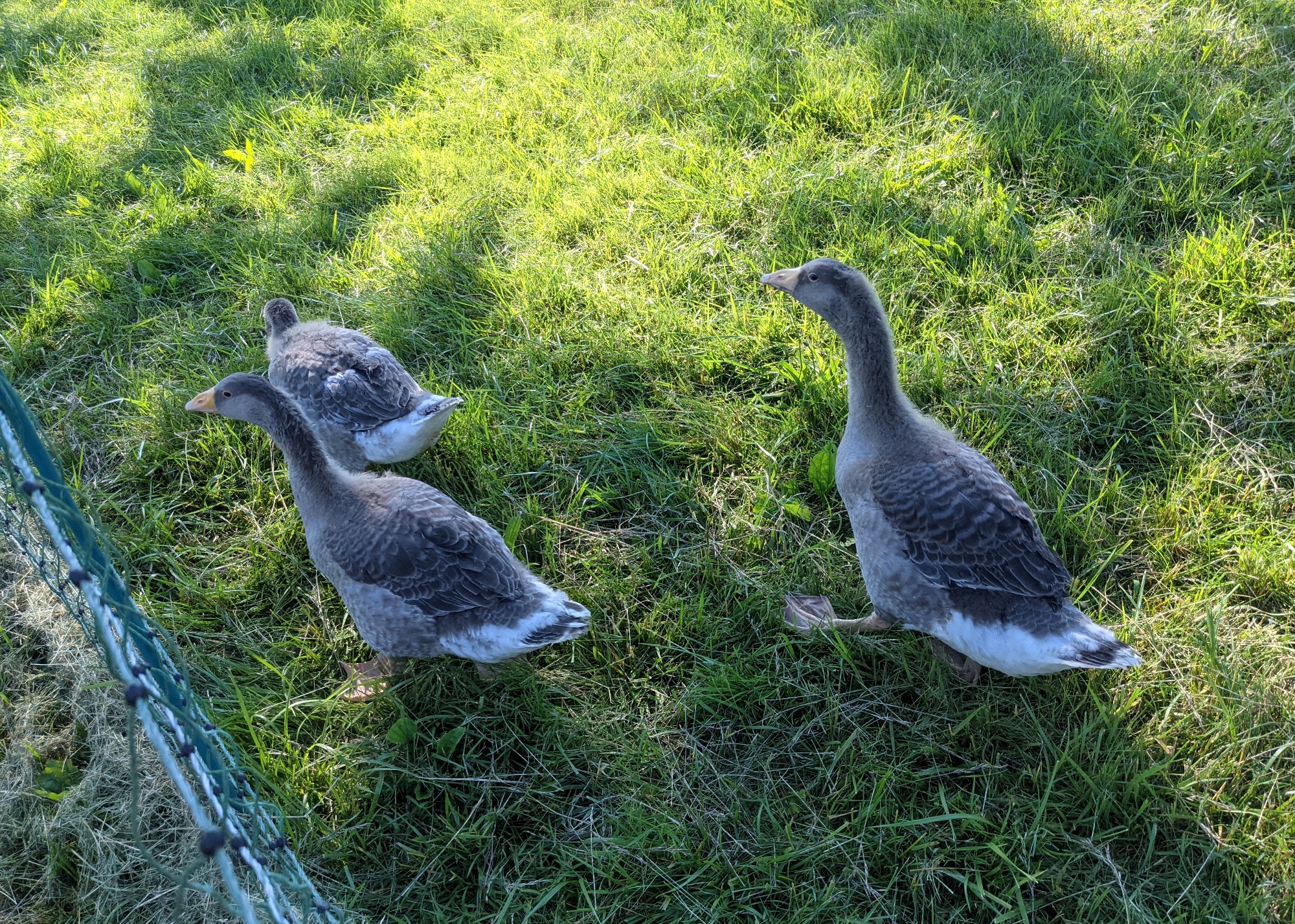
With just a little of their baby down left, just vestiges on their necks and in their tail areas, the goslings look like slightly-smaller versions of the adults. With their feathering, they’re now water-resistant and able to swim in the kiddie pools without needing active supervision. They were ready.
The goslings, as always, were raring to go in the morning. We moved each from their pen to the netted area where the freshly-filled kiddie pools awaited sullying. They checked out the pools but seemed most interested in following us around. After feeding the various groups of chickens their fermented feed, we moved to the barn area, where the waterfowl food and water awaited. The adults have been transitioned to soaked whole wheat and cracked corn to supplement their grazing, but the goslings, in their fast growth phase, still need the higher protein of formulated feed. They also still need supplemental niacin to ensure proper leg development, so we sprinkle nutritional yeast on their food.
Finally, it was time to allow the adults out. They made a beeline for the food (they and the Muscovy are big fans of the soaked grain), then noticed the goslings hanging around and it was on. The goslings were terrified by the larger adults, who seemed to delight in herding them around and occasionally “goosing” a slower baby. Goslings got themselves tangled up in the elderberry bushes (heavy with nearly-mature blooms) and high-centered on sticks and logs.
I almost feel guilty admitting that it was a little entertaining – the goslings are such unbelievably clumsy creatures, barreling into objects and panicking when they find their plump bodies stuck between a couple of fallen tree branches. I watch them with some fascination: they seem like they should be able to extricate themselves, but in their panic, they simply aren’t able to do it. One big problem is that they can’t seem to go in reverse – they only go forward, and that’s pretty limiting.
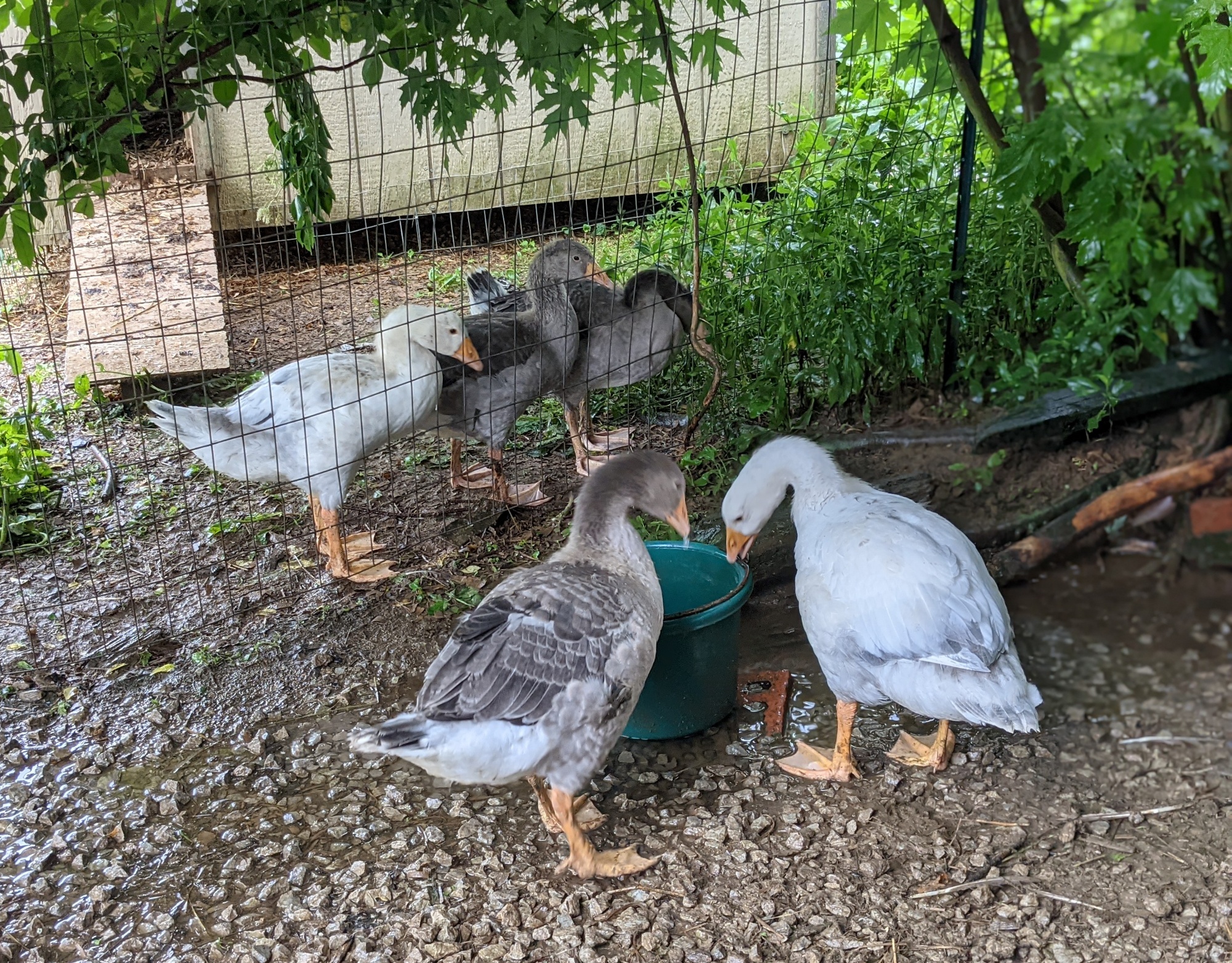
Once everyone was untangled from the elderberry bushes, they rejoined the rest of the goslings in the pool area. The adults had become bored with the “goose the gosling” game and resumed eating. The babies settled by the pools in the shade and calm returned. We continued to monitor the geese, though, to make sure there were no signs of impending violence. Over the course of a couple of hours, the two groups seemed content with the goslings by the pools and the adults in the barn area.
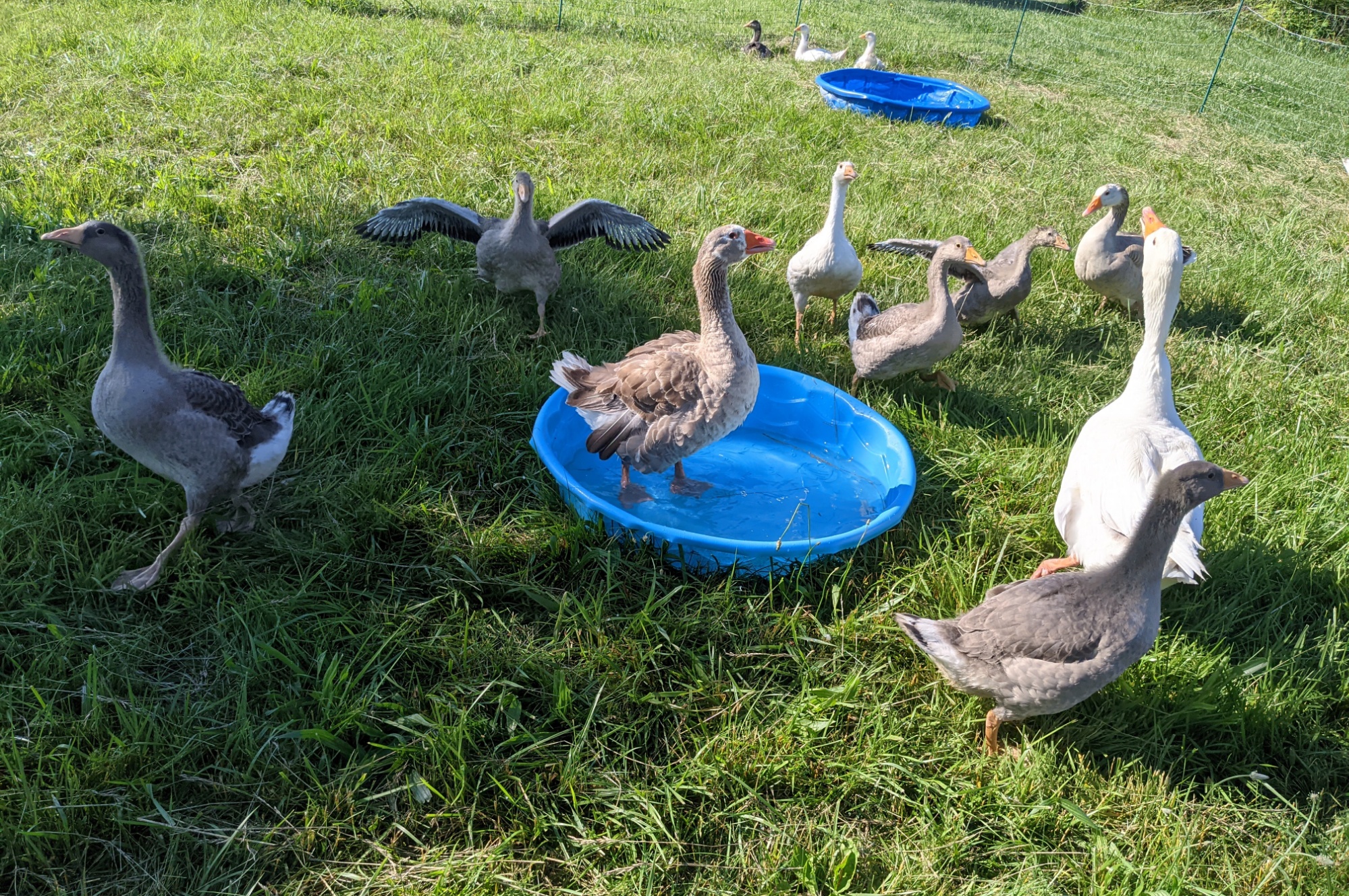
Later in the day, we closed off access to the pool area to push the goslings back toward the food. They found the food and water, but the adults were intent on keeping the goslings away from “their” bowl. This wasn’t going according to plan.
Good problem-solving skills and a plan B (and maybe C, D, and E) are necessities when you raise livestock. Hypothesizing that separation would be best – at least in the short term – for the two groups, we moved the adults to their own hoop tractor with connected access to a large pasture area (created by movable netting) and left the goslings in the main (fenced) area near the barn.
In their new digs, the adults can see the goslings – and we’ve seen both groups looking at each other from behind fencing – but they can’t reach them or chase them away from food bowls.
We’re still working on getting the goslings to go up the ramp to the coop in the evening and down the ramp (only a few seem to understand that they need to walk all the way down it to the ground – many step right off the side) but we know they’ll eventually figure it out. And, one day, the adults may rejoin the juveniles. Until then, each group will have its own area and, hopefully, peace will reign.

